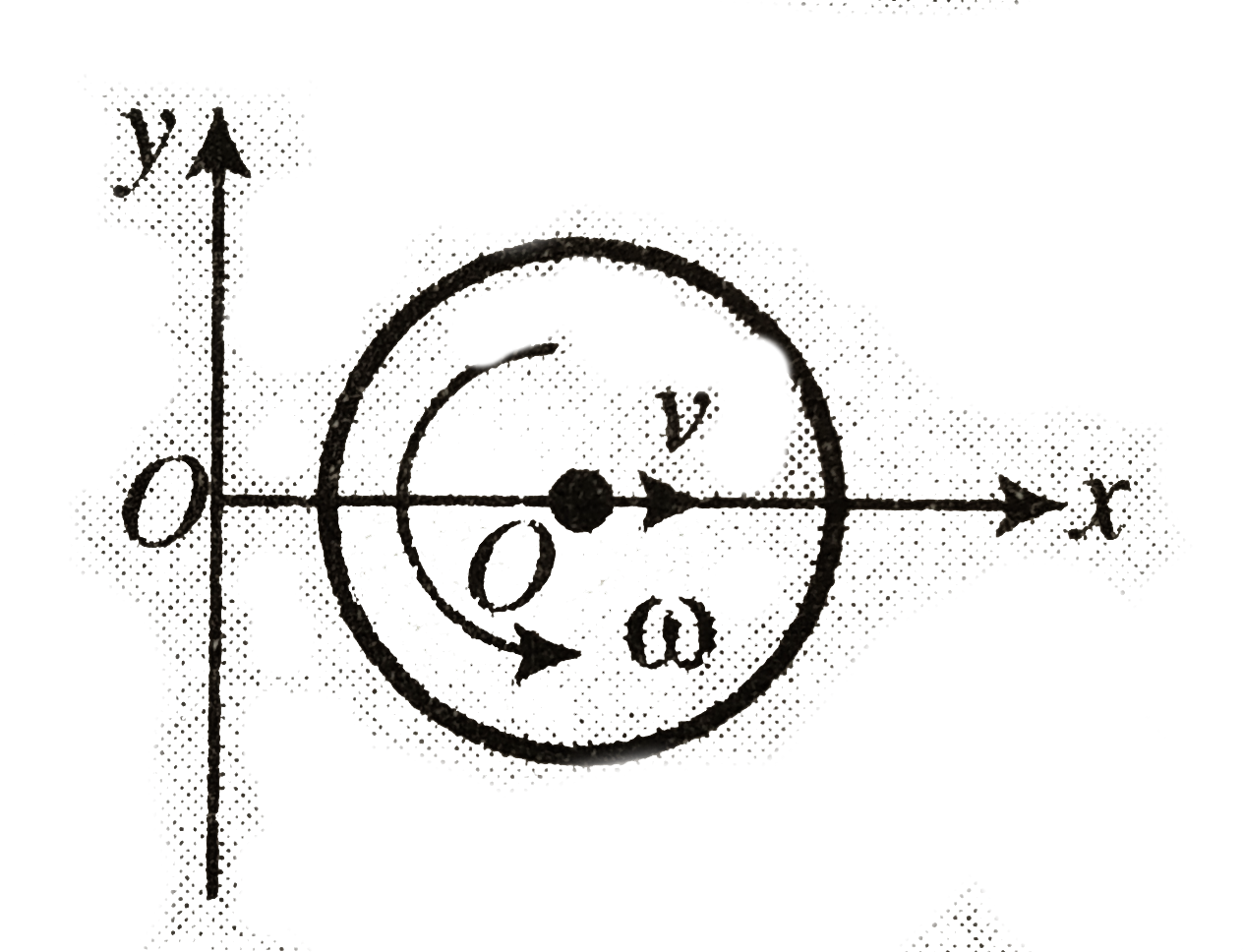A disc rotates about its axis with a constant angular acceleration of 4rads2. Find the radial and tangential acceleration of a particle at a distance of 1 cm from the axis at the end of the first second after the disc starts rotating.Solution in Tamil
The correct Answer is:A, B, C, D
t=1sec,r=1cm=0.01m
1alpha=4rad/s^2<br>thereomega=alphast=4rad/s<br>threforeradialae≤ration<br>a_n=omega^2r=(4)^2xx0.01<br>=0.16m/s^2=16m/s^2<br>Thereforetan≥ntialae≤ration<br>a_T=alphar=0.04m/s^2<br>=4cm/s^2
Topper's Solved these Questions
- ROTATIONAL MECHANICSBOOK - HC VERMACHAPTER - ROTATIONAL MECHANICSEXERCISE - Objective -2
15 Videos
- REST AND MOTION : KINEMATICSBOOK - HC VERMACHAPTER - REST AND MOTION : KINEMATICSEXERCISE - Exercises
51 Videos
- SIMPLE HARMONIC MOTIONBOOK - HC VERMACHAPTER - SIMPLE HARMONIC MOTIONEXERCISE - Exercises
58 Videos
Similar Questions
The axis of rotation of a purely rotating body
View SolutionA man goes 10 m due east and then 24 m due north. Find the distance of his current position from the starting point ?
View SolutionA particle executes simple harmonic motion with an amplitude of 10 cm and time period 6s. At t=0 it is at position x=5 cm going towards positive x-direction. Write the equation for the displacement x at time t. Find the magnitude of the acceleration of the particle at t=4s.
View SolutionA rotating disc moves in the positive direction of x-axis as shown. Find the equation y(x) describing the position of the instantaneous axis of rotation if at the initial moment the centre C of the disc was located at origin after which
a. it moved with constant acceleration a (initial velocity zero) while the disc rotating anticlockwise with constant angular velocity ω. b. it moved with constant velocity v while the disc started rotating anticlockwise with a constant angular acceleration a (with initial angular velocity zero).

View SolutionA horizontal disc rotates with a constant angular velocity omega=6.0rad//s about a vertical axis passing through its centre. A diameter of the disc with a velocity v^'=50cm//s which is constant relative to the disc. Find the force that the disc exerts on the body at the moment when it is located at the distance r=30cm from the rotation axis.
View SolutionA circular disc is rotating about its own axis at constant angular acceleration. If its angular velocity increases from 210 rpm to 420 rpm during 21 rotations then the angular acceleration of disc is
View SolutionA disc rotates with constant angular velocity. Doesa point on its rim have a tangential acceleration or a radial acceleration ? Are these accelerations constant ? '
View Solutionएक चकती अपने अक्ष के परितः नियत कोणीय त्वरण 4 rad/s2 से घूम रही है | चकती के घूमना प्रारंभ करने के 1 s बाद अक्ष से 1 cm दूर स्थित कण का त्रिज्या की ओर (radial) तथा स्पर्शरेखा की ओर (tangential) त्वरण ज्ञात करें |
View SolutionA disc of mass 2 kg and diameter 40 cm is free to rotate about an axis passing through its centre and perpendicular to its plane. If a force of 50 N is applied to the disc tangentially Its angular acceleration will be
View SolutionA disc initially at rest , is rotated about its axis with uniform angular acceleration . In the first 2 s, it rotates an angle theta . In the next 2s, the disc rotates through an angle
View SolutionA disc, initially at rest, starts rotating about its own axis/ with a constant angular acceleration of 0*2 rad/s2. The time taken by the disc to rotate by 10 rad (in seconds) is
View SolutionA circular disc is rotating about its natural axis with angular velocity of 10rads−1. A second disc of same mass is joined to it coaxially. If the radius of disc is half of the radius of the first, then they together rotate with an angular velocity of
View SolutionA circular disc is rotation about its natural axis with angular velocity of 10rads−1. A second disc of same mass is joined to it coaxially. If the radius of disc is half of the radius of the first, then they together rotate with an angular velocity of
View SolutionA circular disc is rotating about its natural axis with angular velocity of 10" rads"^(-1) . A second disc of same mass is joined to it coaxially. If the radius of disc is half of the radius of the first, then they together rotate with an angular velocity of
View SolutionA circular disc is rotating about its natural axis with angular velocity of 10" rads"^(-1) . A second disc of same mass is joined to it coaxially. If the radius of disc is half of the radius of the first, then they together rotate with an angular velocity of
View SolutionA disc rotating about its axis, from rest it acquires a angular speed 100rev/s in 4 second. The angle rotated by it during these seconds (in radian ) is :-
View Solution